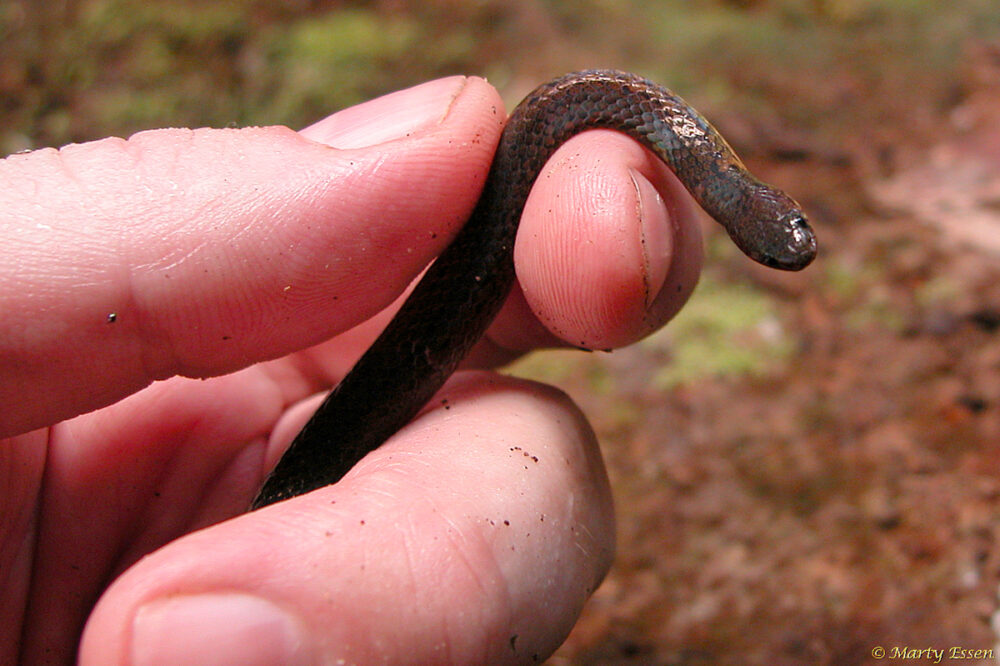
Marty’s photo of the day #4417: The following short excerpt is from my first book, Cool Creatures, Hot Planet: Exploring the Seven Continents. For this adventure, Deb and I are on the island of Borneo, and Stephen is our guide from the Dusun Segama tribe:
Eventually we rose to our feet and started toward the lodge. Stephen led the way, followed by me, then Deb. We had walked only a short distance when Deb called out, “Marty, Stephen, look at the snake you two almost stepped on!”
We turned around and saw a small black and orange snake, partially covered by a large leaf. “Worm snake,” said Stephen. “Harmless.”
I reached down and removed the leaf. I expected the snake to lie motionless, but instead he slithered off the trail. His diminutive size kept him from going very far, and I quickly found him again. Deciding he would be easier to photograph if he was in my hand, I gently grasped his midsection between my thumb and forefinger. As I picked him up, he lashed out with several sharp bites!
“Ouch! He’s a feisty little guy,” I said.
“Are you bleeding?” asked Deb.
“No, he’s too small to break my skin.”
I snapped a few photos, and let the snake go.
Once we completed our hike, I turned on my digital camera and matched the images I’d taken of the snake with a photo in A Field Guide to the Snakes of Borneo. Stephen’s jungle knowledge was amazing but not perfect. I wasn’t holding a worm snake—I was holding a highly venomous banded coral snake!
Banded coral snakes do not have the distinctive alternating bands of color that coral snakes in the United States have. Instead, they have subtle bands of black, which come partway up from their orange bellies to merge with their orange-tinted black backs. According to the field guide, the Iban call the snakes “pig cobras,” as they occasionally bite and kill the wild bearded pigs that nuzzle them by mistake. Since a snake’s venom is most concentrated when it’s young, I was indeed fortunate the pig cobra I picked up was too small to pierce my skin.